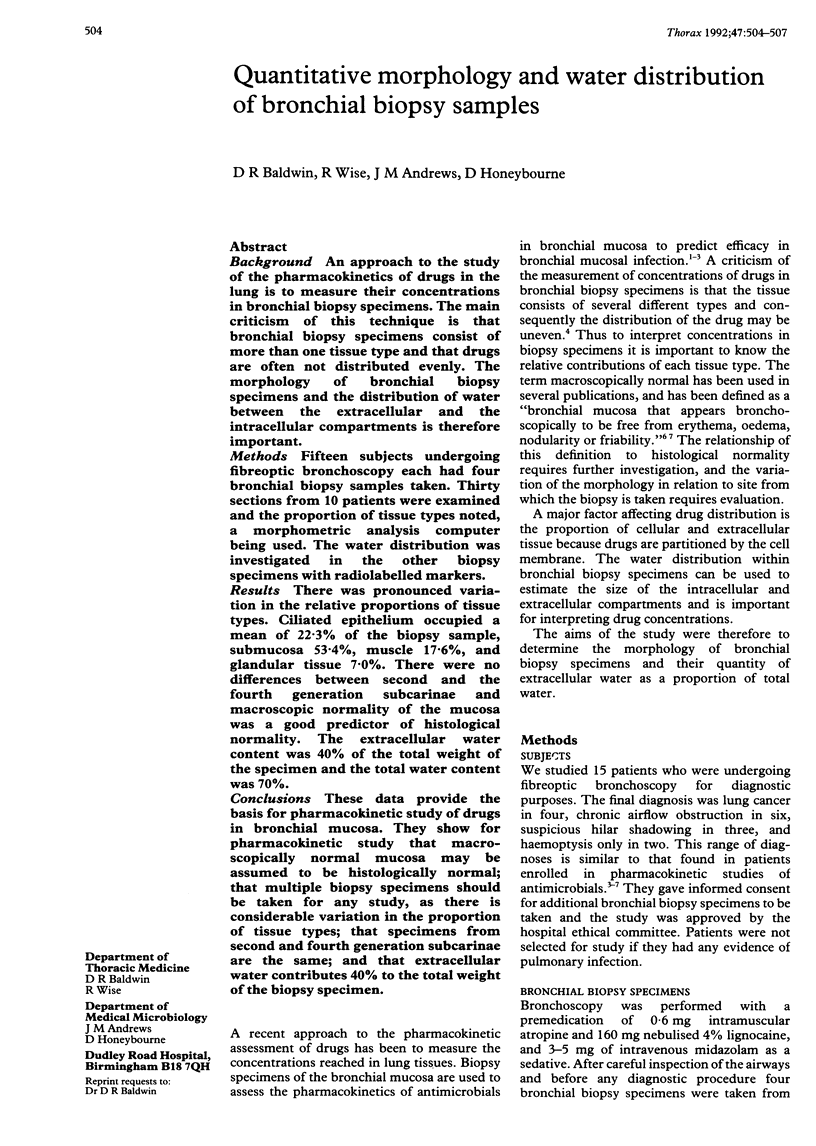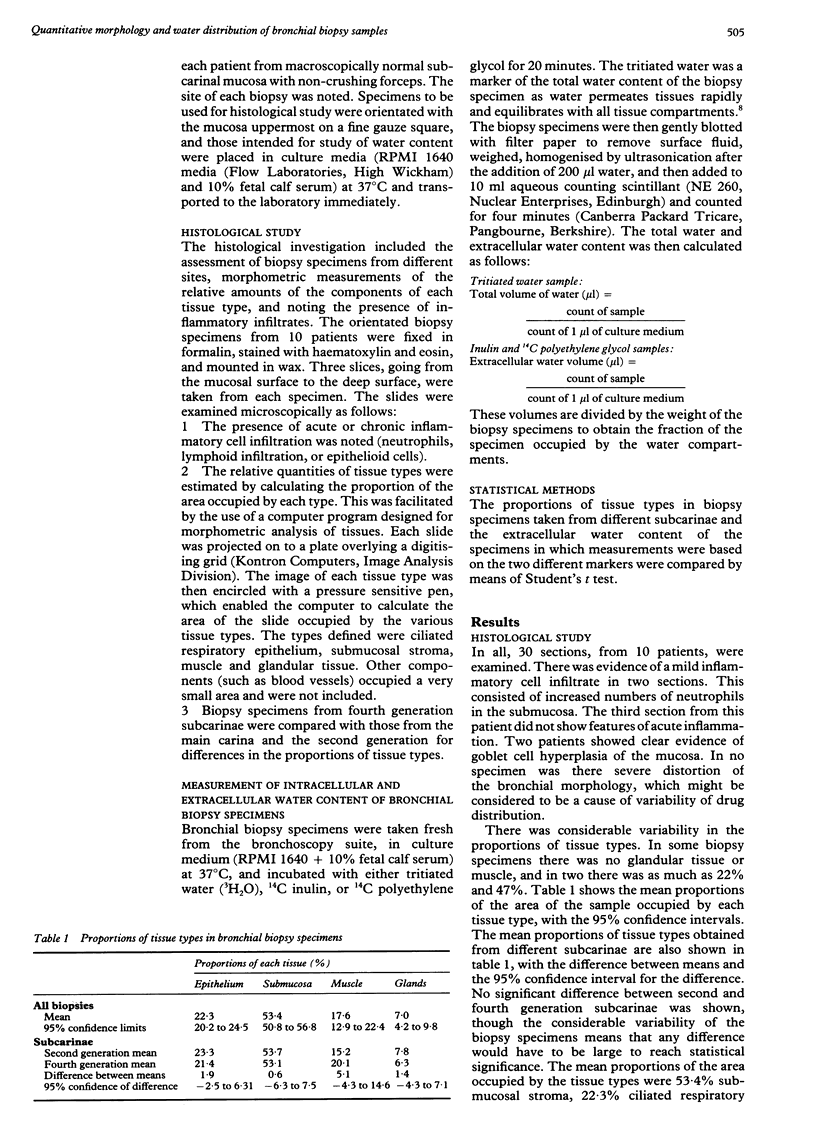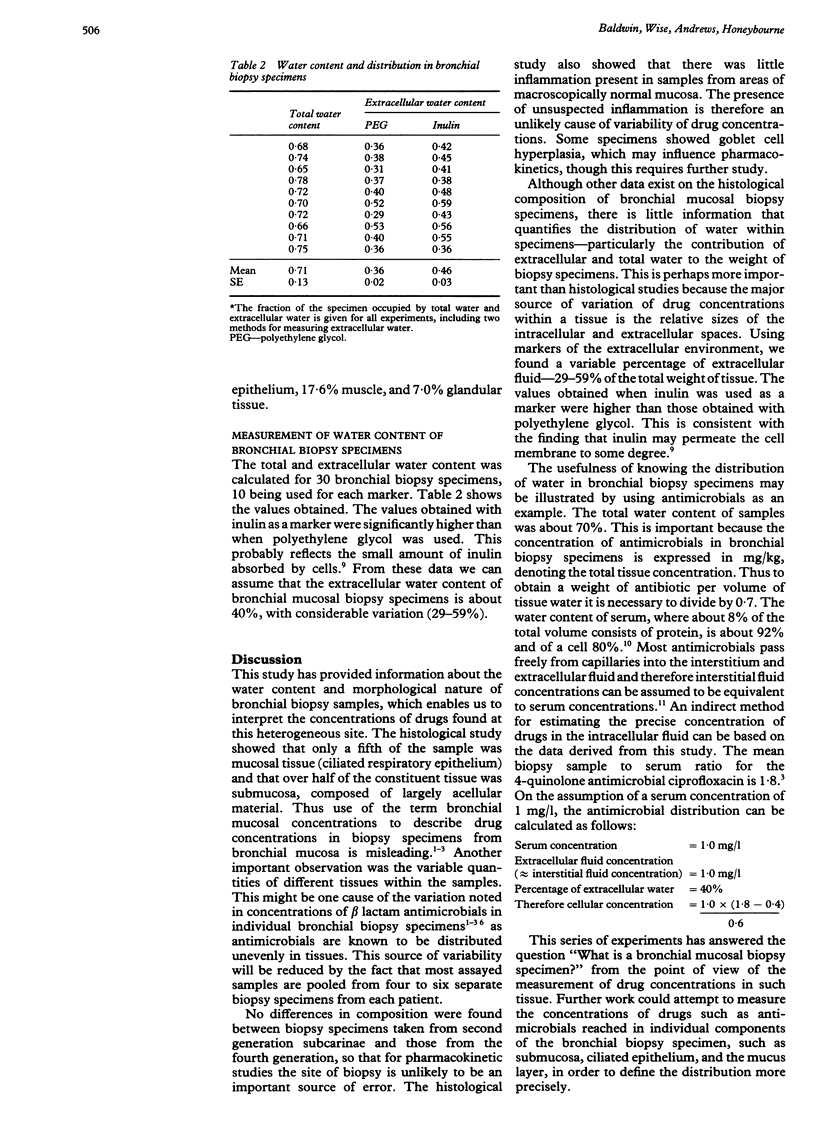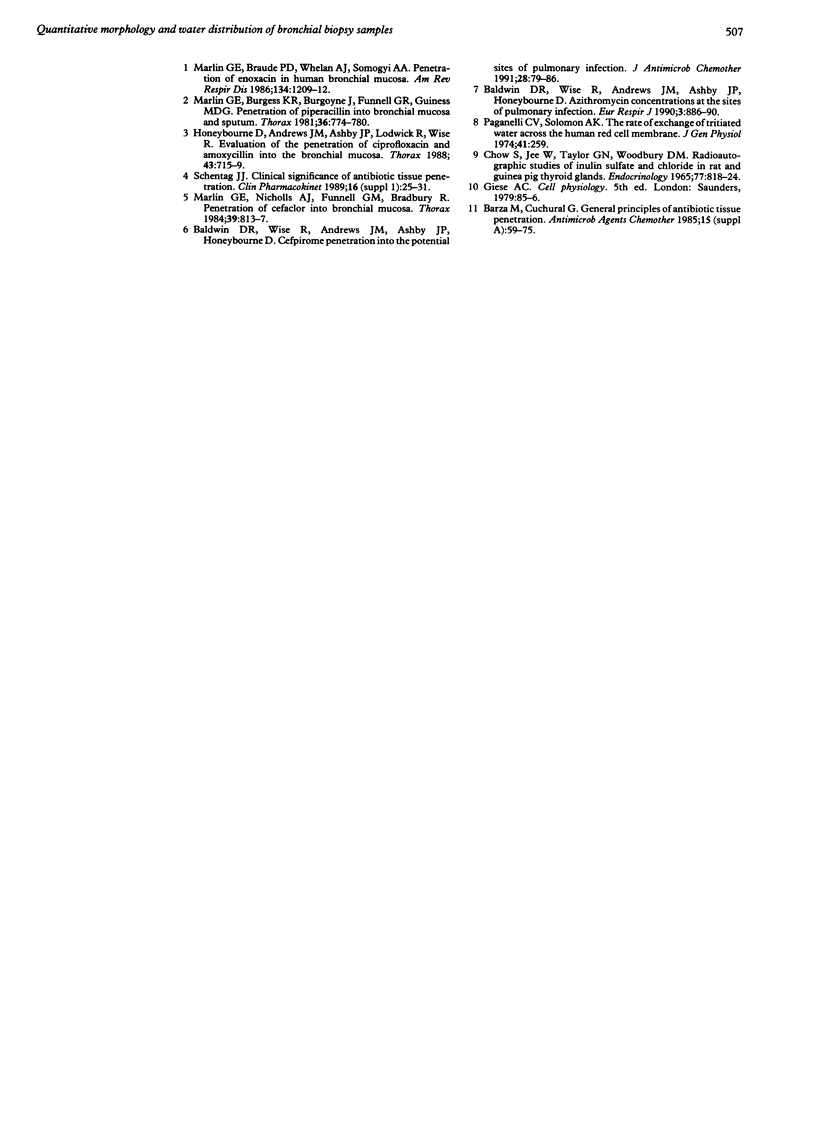Abstract
BACKGROUND: An approach to the study of the pharmacokinetics of drugs in the lung is to measure their concentrations in bronchial biopsy specimens. The main criticism of this technique is that bronchial biopsy specimens consist of more than one tissue type and that drugs are often not distributed evenly. The morphology of bronchial biopsy specimens and the distribution of water between the extracellular and the intracellular compartments is therefore important. METHODS: Fifteen subjects undergoing fibreoptic bronchoscopy each had four bronchial biopsy samples taken. Thirty sections from 10 patients were examined and the proportion of tissue types noted, a morphometric analysis computer being used. The water distribution was investigated in the other biopsy specimens with radiolabelled markers. RESULTS: There was pronounced variation in the relative proportions of tissue types. Ciliated epithelium occupied a mean of 22.3% of the biopsy sample, submucosa 53.4%, muscle 17.6%, and glandular tissue 7.0%. There were no differences between second and the fourth generation subcarinae and macroscopic normality of the mucosa was a good predictor of histological normality. The extracellular water content was 40% of the total weight of the specimen and the total water content was 70%. CONCLUSIONS: These data provide the basis for pharmacokinetic study of drugs in bronchial mucosa. They show for pharmacokinetic study that macroscopically normal mucosa may be assumed to be histologically normal; that multiple biopsy specimens should be taken for any study, as there is considerable variation in the proportion of tissue types; that specimens from second and fourth generation subcarinae are the same; and that extracellular water contributes 40% to the total weight of the biopsy specimen.
Full text
PDF



Selected References
These references are in PubMed. This may not be the complete list of references from this article.
- Baldwin D. R., Maxwell S. R., Honeybourne D., Andrews J. M., Ashby J. P., Wise R. The penetration of cefpirome into the potential sites of pulmonary infection. J Antimicrob Chemother. 1991 Jul;28(1):79–86. doi: 10.1093/jac/28.1.79. [DOI] [PubMed] [Google Scholar]
- Baldwin D. R., Wise R., Andrews J. M., Ashby J. P., Honeybourne D. Azithromycin concentrations at the sites of pulmonary infection. Eur Respir J. 1990 Sep;3(8):886–890. [PubMed] [Google Scholar]
- Barza M., Cuchural G. General principles of antibiotic tissue penetration. J Antimicrob Chemother. 1985 Jan;15 (Suppl A):59–75. doi: 10.1093/jac/15.suppl_a.59. [DOI] [PubMed] [Google Scholar]
- Chow S. Y., Jee W. S., Taylor G. N., Woodbury D. M. Radioautographic studies of inulin, sulfate and chloride in rat and guinea pig thyroid glands. Endocrinology. 1965 Nov;77(5):818–824. doi: 10.1210/endo-77-5-818. [DOI] [PubMed] [Google Scholar]
- Honeybourne D., Andrews J. M., Ashby J. P., Lodwick R., Wise R. Evaluation of the penetration of ciprofloxacin and amoxycillin into the bronchial mucosa. Thorax. 1988 Sep;43(9):715–719. doi: 10.1136/thx.43.9.715. [DOI] [PMC free article] [PubMed] [Google Scholar]
- Marlin G. E., Braude P. D., Whelan A. J., Somogyi A. A. Penetration of enoxacin into human bronchial mucosa. Am Rev Respir Dis. 1986 Dec;134(6):1209–1212. doi: 10.1164/arrd.1986.134.5.1209. [DOI] [PubMed] [Google Scholar]
- Marlin G. E., Burgess K. R., Burgoyne J., Funnell G. R., Guinness M. D. Penetration of piperacillin into bronchial mucosa and sputum. Thorax. 1981 Oct;36(10):774–780. doi: 10.1136/thx.36.10.774. [DOI] [PMC free article] [PubMed] [Google Scholar]
- Marlin G. E., Nicholls A. J., Funnell G. R., Bradbury R. Penetration of cefaclor into bronchial mucosa. Thorax. 1984 Nov;39(11):813–817. doi: 10.1136/thx.39.11.813. [DOI] [PMC free article] [PubMed] [Google Scholar]
- PAGANELLI C. V., SOLOMON A. K. The rate of exchange of tritiated water across the human red cell membrane. J Gen Physiol. 1957 Nov 20;41(2):259–277. doi: 10.1085/jgp.41.2.259. [DOI] [PMC free article] [PubMed] [Google Scholar]
- Schentag J. J. Clinical significance of antibiotic tissue penetration. Clin Pharmacokinet. 1989;16 (Suppl 1):25–31. doi: 10.2165/00003088-198900161-00005. [DOI] [PubMed] [Google Scholar]


